Power & Beauty: Photographing Brown Bears

Join pro-photographer David Swindler as he shares his best tips and tricks for photographing brown bears in the wild. Watch the video below where David will talk in-depth on the following subjects:
- About Brown Bears
- Safety
- Bear Activities
- Where and When to Go
- Photo Gear
- Shooting Techniques
- Composition
Power & Beauty: Learning to Photograph Brown Bears with David Swindler from B&H Photo on Vimeo.
About Brown Bears

- Brown Bears (i.e. Grizzy Bears) are found throughout the Northern Reaches of Alaska, Canada, and Eurasia. They are identified by the hump on their back, dish-shaped face, and long claws.
- They can be found in the lower 48 states in places like Yellowstone and Glacier NP’s, but in smaller numbers.
- Brown bears can weigh between 300-1200 lbs, depending on habitat, sex, and location. They can live between 15-25 years.
- They are omnivores, eating plants, berries, fish, and small mammals.
- Over short distances, they can run up to 30 mph!
- Brown bears primarily live a solitary life and only come together to mate or take advantage of consolidated food sources.
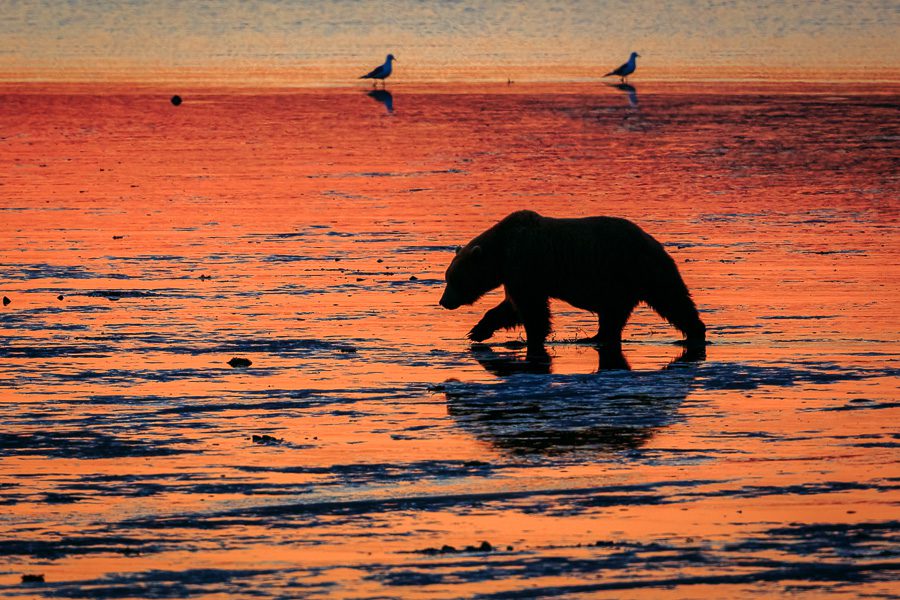
Safety
- Bear attacks are relatively rare. They kill on average 3 people a year in the US/Canada. Most bears want to avoid humans and will move away.
- The reasons for attacks include protecting their young, surprises, hunger, predation and territory.
- Almost all wilderness attacks happen to groups of 1 or 2 humans. Staying in a consolidated group of people is the best way to stay safe!
- Stay together in a group, make noise, and don’t approach bears!
- If a bear starts to approach you, stand tall, raise your arms over your head, make noise, and DO NOT run! Slowly back up if needed.
- If they continue to act in an aggressive fashion, you may need to use a bear deterrent like bear spray or a flare.
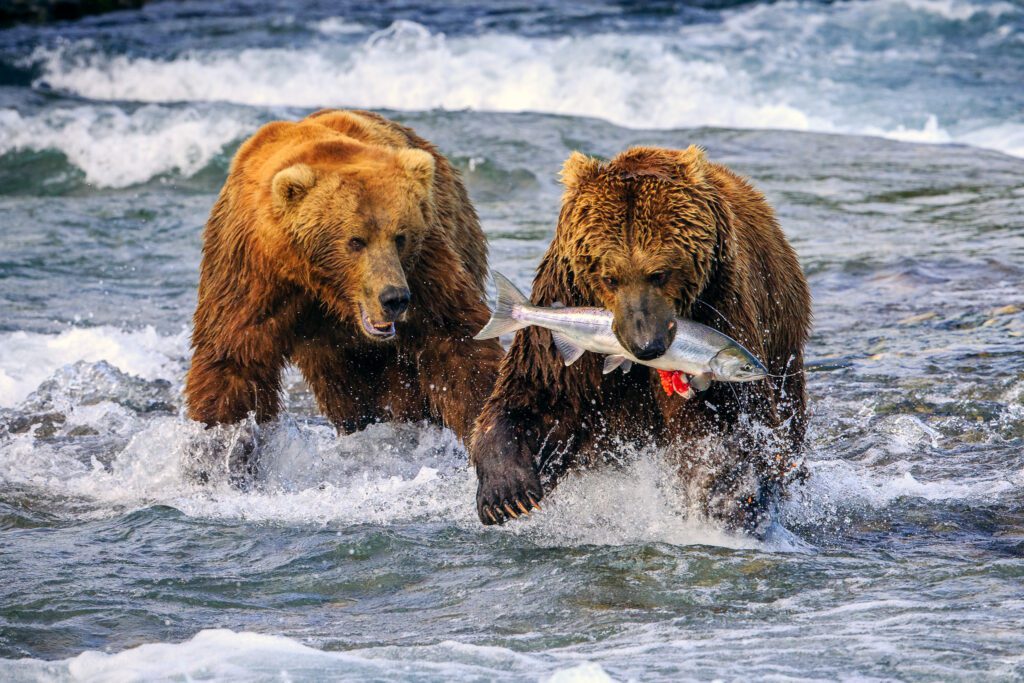
Bear Activities
- Mating (May-Mid July)
- Grazing (Sedge Grass, Meadows, etc)
- Fishing
- Clamming
- Foraging
- Social Interactions
- Family Units

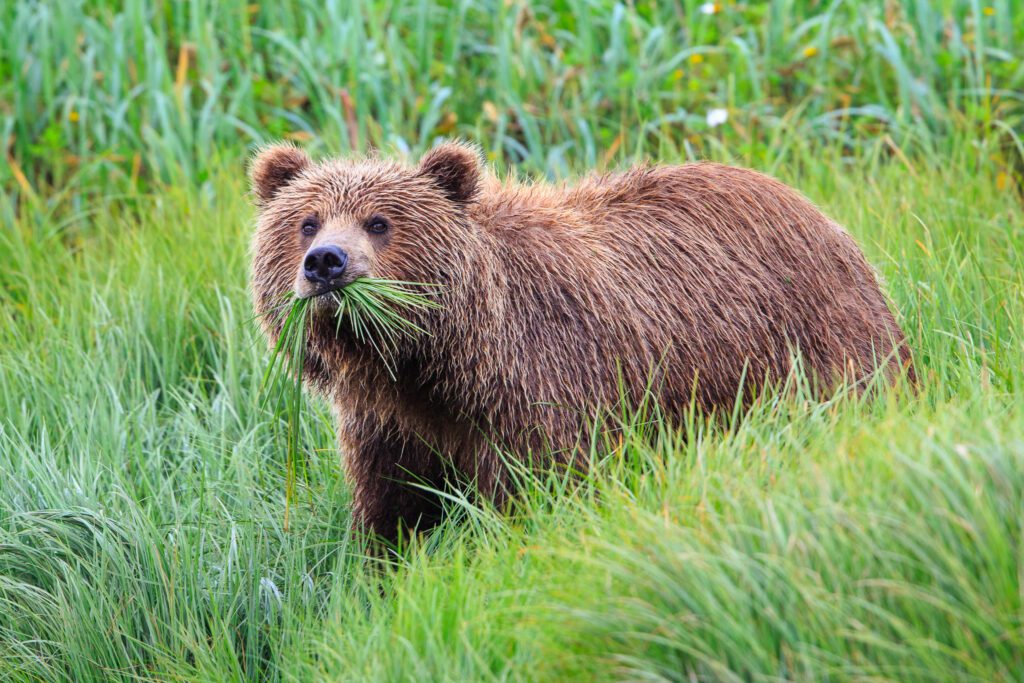
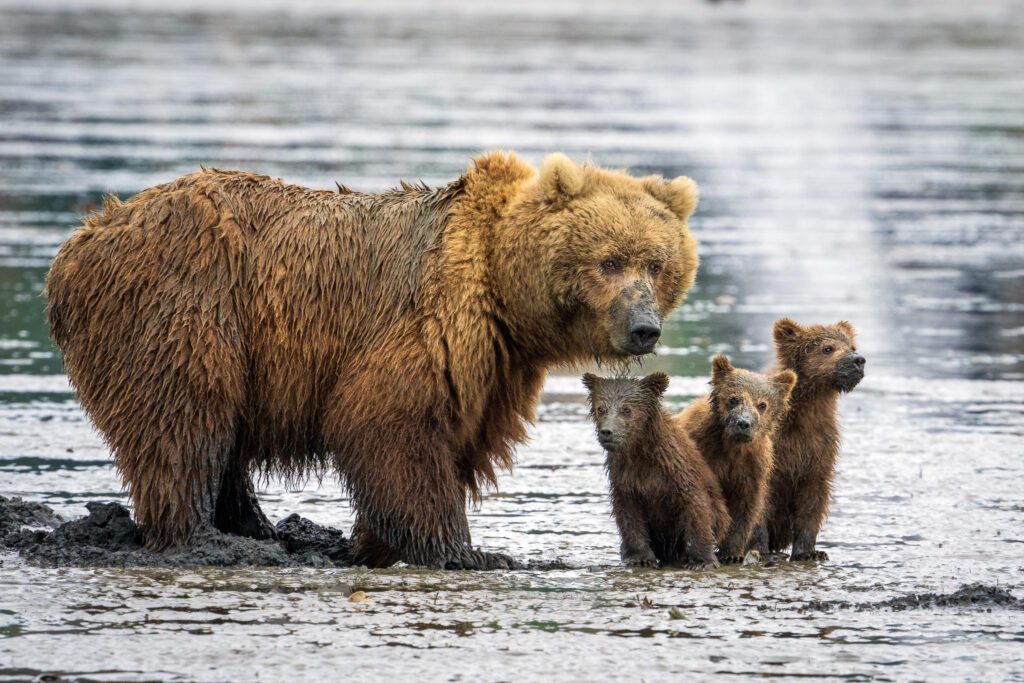



When To Go
- You need to decide what types of behaviors you want to capture. Make sure you take into account coastal bears vs mountain bears.
- The timing can be very localized. It’s imperative you do your own research or go with a knowledgeable guide.
- Go earlier in the season if you want better chances of seeing the small spring cubs.
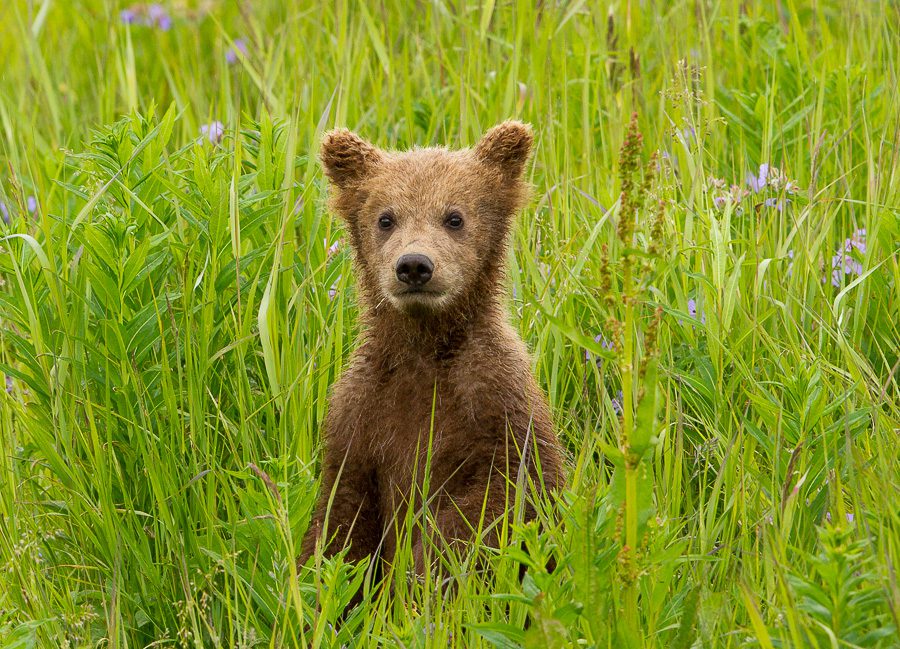
Where to Go
- Southern Alaska Coast – Katmai, Lake Clark, Kodiak
- Denali National Park
- Glacier, Tetons, Yellowstone National Parks
- You will have more luck in areas where bears are more conditioned to seeing people.
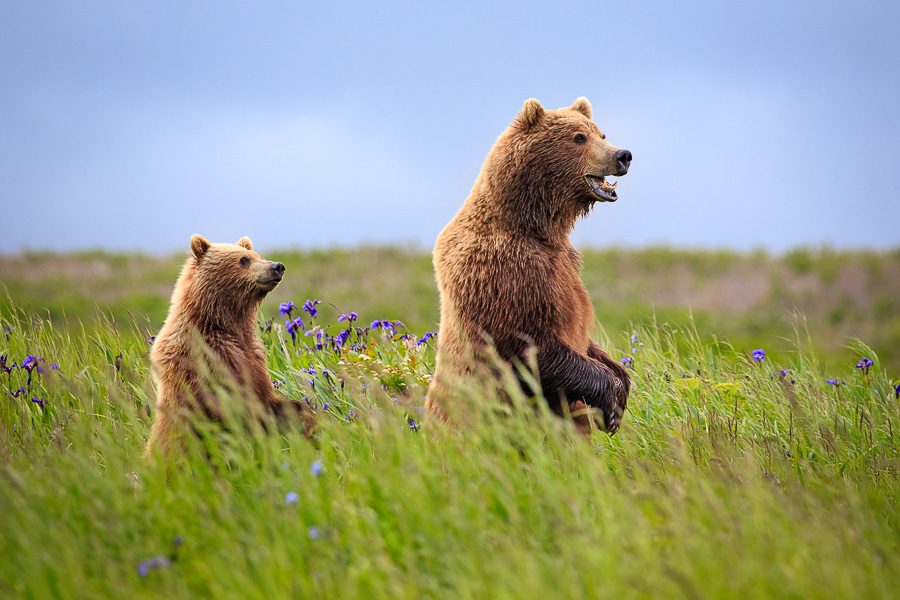
Photo Gear
- Do you need a BIG super-telephoto lens? No!!
- David recommends hand-holdable zoom telephoto lenses for shooting wildlife. Watch the video above to find out why.
- When selecting a lens, do your homework, read reviews, and compare the bench testing parameters. Watch the video above to learn the specific things David looks for in a wildlife lens.
- Should you use a Tele-Converter with your lens? Well, it depends. In the video above David breaks it down when you should or shouldn’t use a tele-converter.
- For a camera body, you need one that can auto-focus quickly, has a fast burst rate, and good low-light (high ISO) sensitivity. Having 2 camera bodies will enable you to get more shots without having to change lenses all the time. Watch the video to learn more about specific things you need in a wildlife camera body.
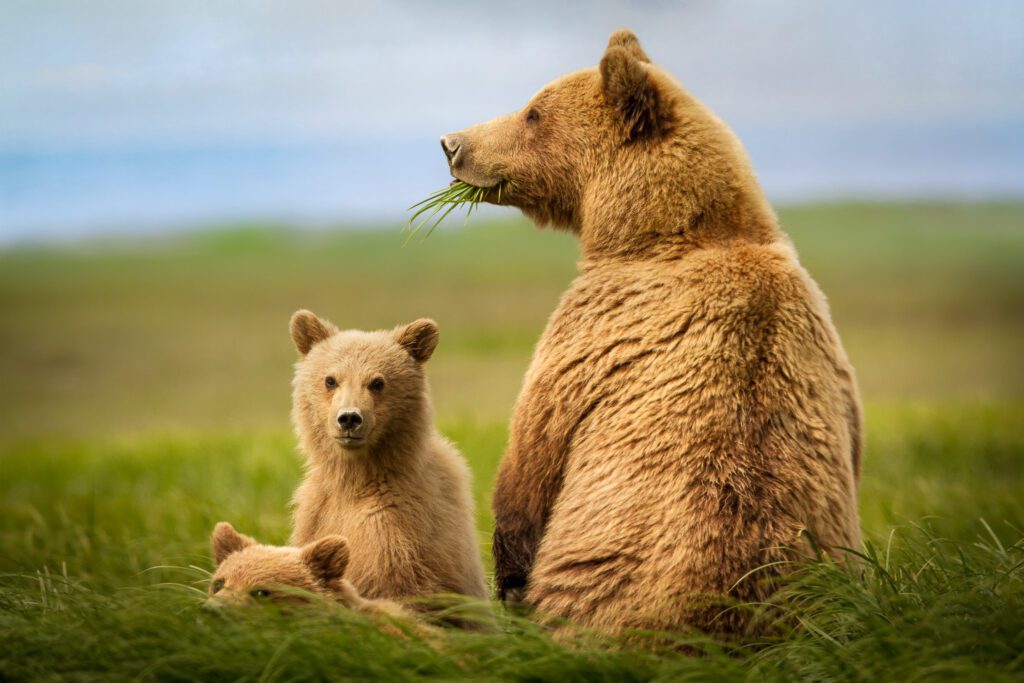
Shooting Techniques
- Depth of Field – How much of an image is acceptably sharp? Be careful with wide-open apertures as bears are large animals and often need more Depth of Field to keep the entire face sharp. Stop down to f/7.1-f/11 when shooting groups of bears. Watch the video where David breaks down the 4 variables you need to consider with regards to Depth of Field.
- Shutter Speed – It’s absolutely critical that you nail the right shutter speed to capture the effect you want. In the video, David goes over 4 different shutter speed ranges for different effects.
- Composition – There are many things to keep in mind with regards to composition. In the video, David talks about how to compose action shots, how to be mindful of the background, how to avoid collisions, and how to include the landscape.

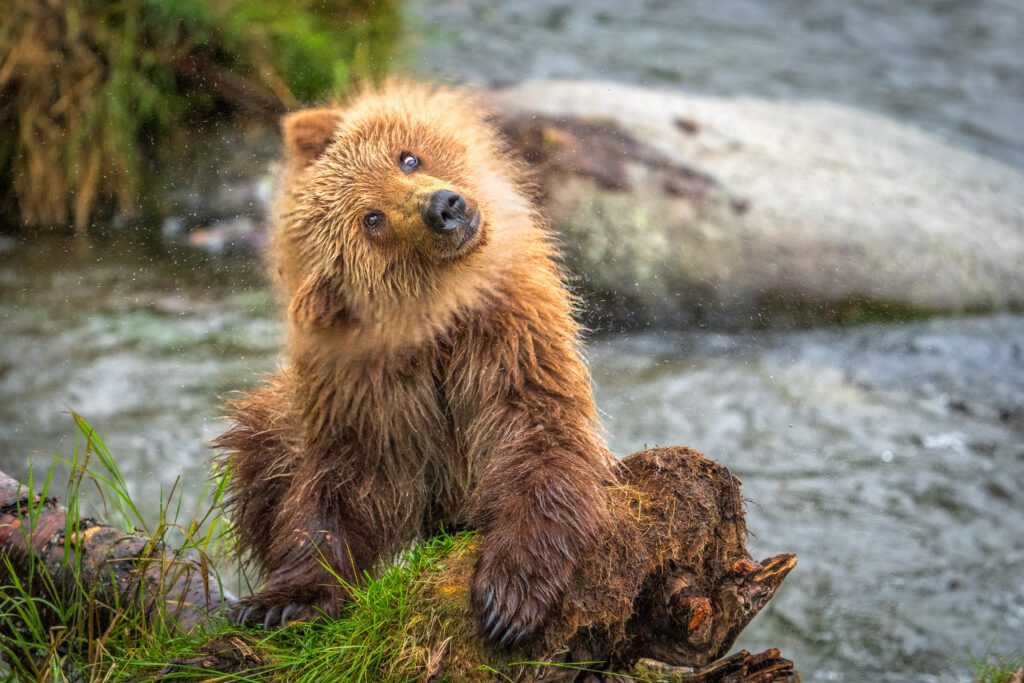
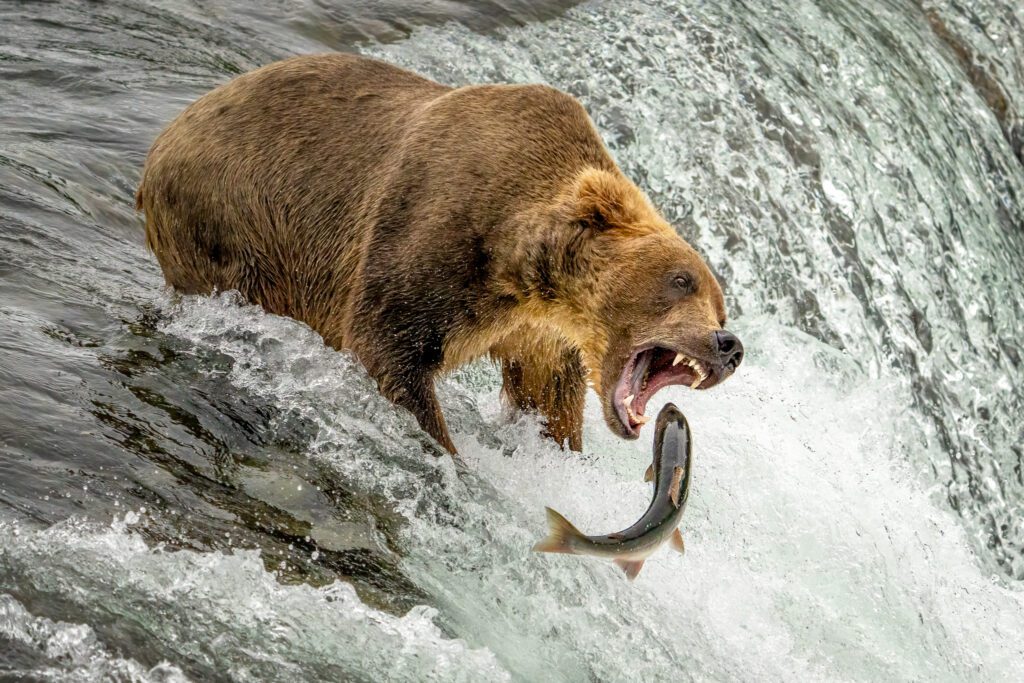
Putting It All Together
- Use Manual Mode
- Set Brightness with Exposure Compensation (check your histogram)
- Set ISO to Auto
- Set Aperture as per DOF Requirement
- Set Shutter Speed as per Action / Focal Length Requirement
- Use Fast Burst Rate with Continuous AF
- Be Mindful of Backgrounds and Composition
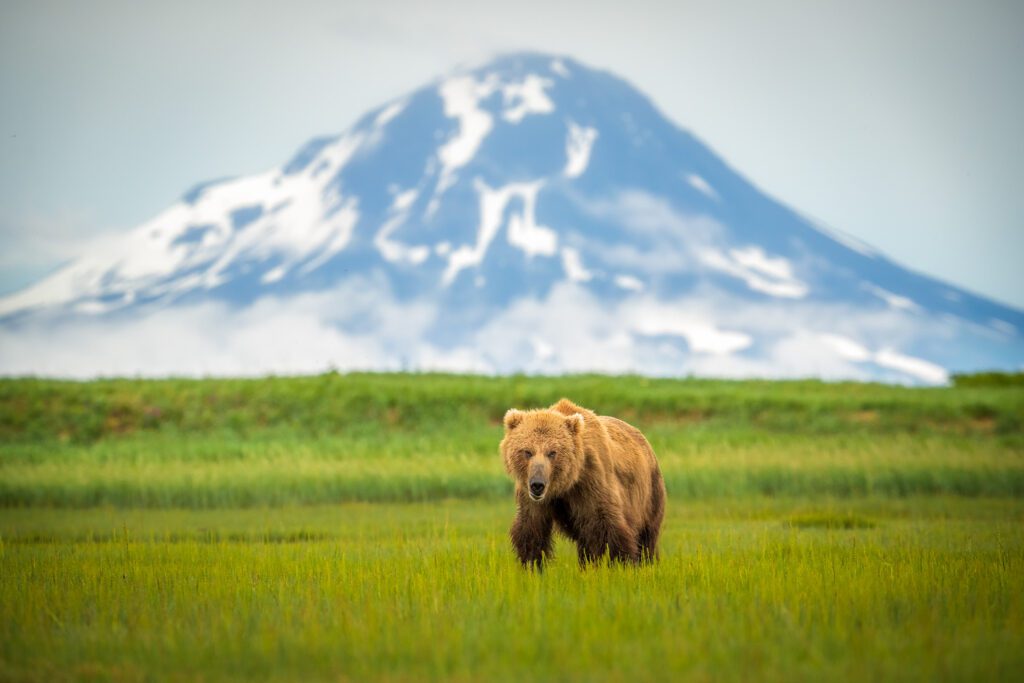
Join Us for an Epic Brown Bear Workshop!
- July 19-25, 2025
- Exclusive daily charter flights from our remote wilderness lodge will allow us to photograph the bears in many different environments.
- Dates are timed for peak salmon runs in many of Katmai’s rivers.
- All-inclusive workshop with 5 nights lodging and all meals included.
- Pro instructor David Swindler will help you get the best possible shots. Expect plenty of individual attention with a small group of 5 people.
- Post Processing Instruction and Image Review sessions will be scheduled throughout the workshop.
